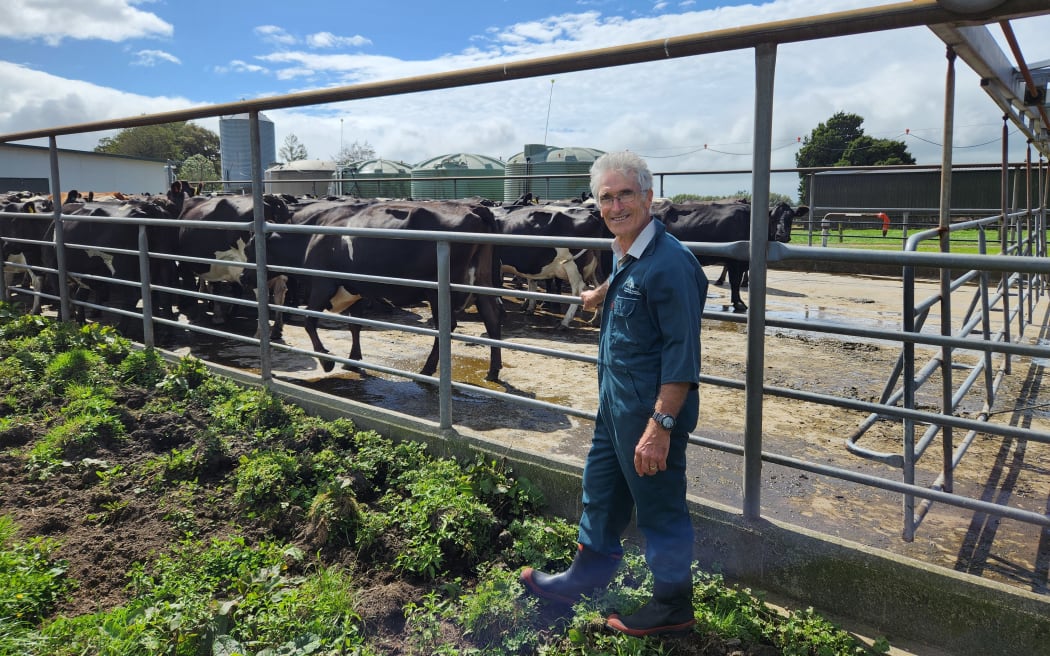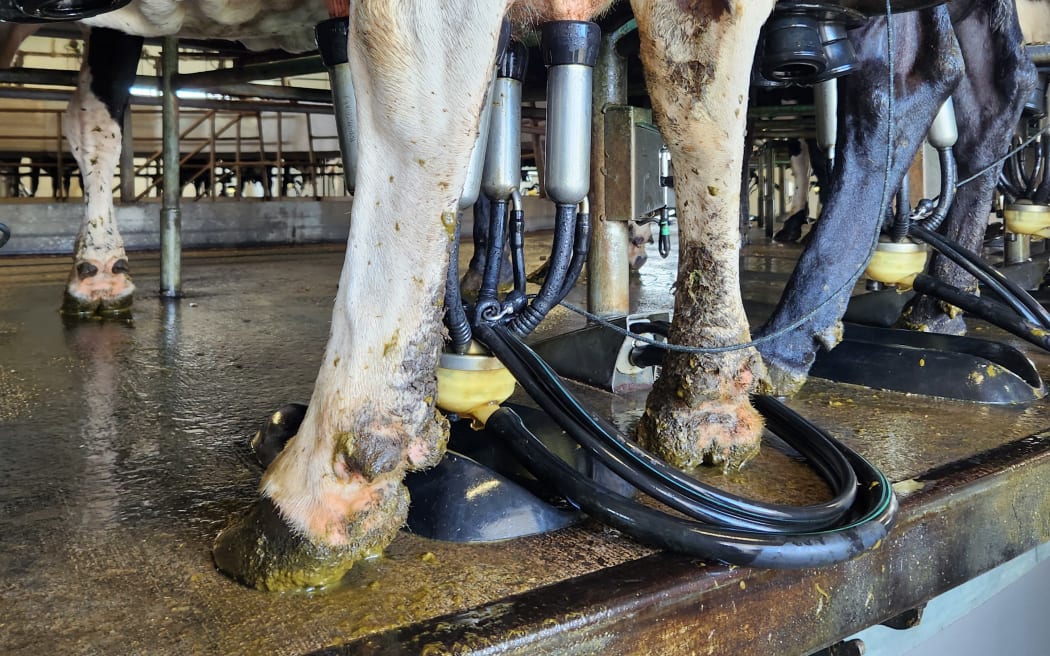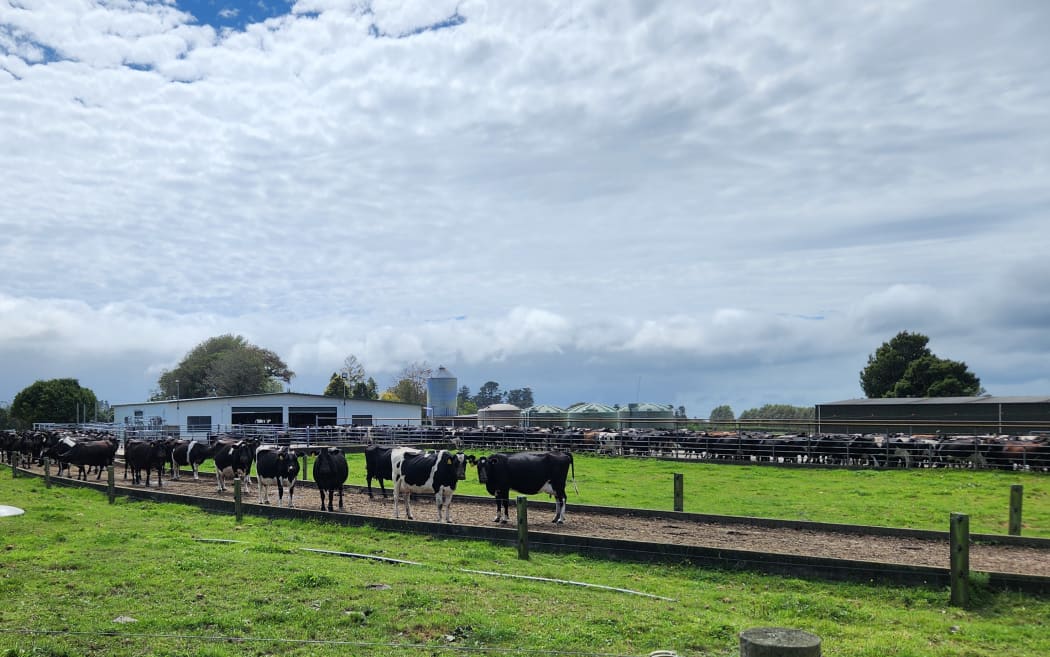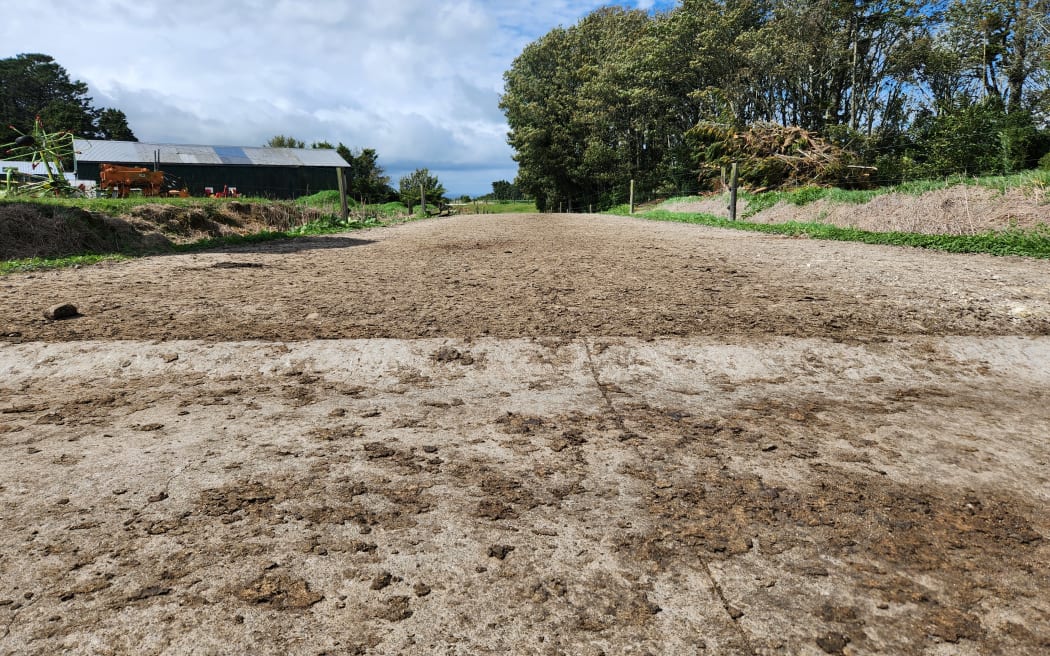Neil Chesterton has seen quite a few sore feet in his time.
He's spent 50 years as a vet in the Taranaki town of Inglewood, and has a deep understanding of why New Zealand's pasture-fed dairy cows go lame.

Neil Chesterton specialises in treating dairy cow lameness Photo: RNZ/Sally Round
Chesterton travels the world sharing his knowledge with other farmers and at conferences and seminars.
It all comes down to patience and farm design, he told Country Life during milking time at Bryce Hunger's farm, where he had conducted some of his research.
Hunger's 500 cows have a walk of less than 1.5km to the milking shed, a good track surface, spacious yards with carefully calibrated automatic backing gates and a herder who's not hot on their heels as they make their way to milking.
Chesterton's interest in lameness started early on in his career, when he noticed some farmers had a third of their herd lame over a season.
As well as impacting the health of the cow, lameness leads to a dramatic loss in milk production.

Lameness can lead to dramatic drop in milk production. Photo: RNZ/Sally Round
Northern Hemisphere cows, which are housed in concrete-floored barns, generally go lame from sole ulcers, which was less of an issue in New Zealand, he found.
As New Zealand cows are "walking cows", there was a gap in research, so Chesterton set about doing his own.
With the farmers' consent, he had spent plenty of time hiding in bushes, observing from his car and even climbing under a milk vat to collect data and study cow behaviour - all without alerting the curious and sometimes fearful animals.
One farmer had hardly any lameness in his herd, and Chesterton discovered he would stop his motorbike well behind the cows on the stroll to the milking shed and smoke three cigarettes - not that he was encouraging smoking!

Good "cow flow" is part of the recipe for healthy feet. Photo: RNZ/Sally Round
The worst case he had attended was at a farm where a whole herd refused to budge after milking.
They lay down in the yard, their soles thin and worn-out. It turned out they had walked more than 10km a day for the previous five days.
According to Chesterton, it is important to let cows follow their own order, both on the track and in the waiting yard - which is where cows can easily slip and injure themselves if they're rushed in.

Chesterton advises tracks to the milking shed be no longer than 1.5km. Photo: RNZ/Sally Round
"There's amazing things going on in front of our eyes right now," he said as we watched the cows move into position as they neared the shed.
Chesterton described how on another farm a large white cow was causing a headache, by not moving from the yard into the milking shed.
"The farmer said, 'I've got to get rid of that girl - she's a pain in the neck'."
Chesterton filmed the cow and discovered she was acting as a kind of drafting gate, allowing a smooth flow of cows in to be milked.
Farm workers' patience is a real virtue when it comes to ensuring cows avoid lameness. It was a good idea for the cowherd to allow 10m behind the herd, he said.
And they needn't worry about sounding silly. "The first thing is talk to the cows - to get angry with cows makes them afraid."
Neil Chesterton's wife Sandra has written a book about his studies into lameness - Lame Stories from the Vet from Inglewood, published in 2023.


